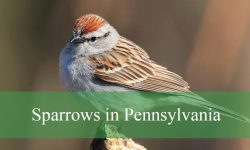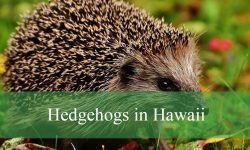Wild rabbits in Georgia are a fascinating sight, whether darting across open meadows or blending into dense woodlands. Their subtle movements and alert posture make every encounter a special moment in nature.
Observing them up close reveals their foraging habits, from nibbling tender grasses to exploring shrubs for berries. Early mornings and evenings are the best times to catch these nocturnal feeders in action.
From farmlands to forest edges, Georgia’s varied landscapes offer countless opportunities to spot and identify different rabbit species. Each type has unique markings and behaviors that make learning about them both fun and rewarding.
Different Types of Wild Rabbits Found in Georgia
Eastern Cottontail (Sylvilagus floridanus)
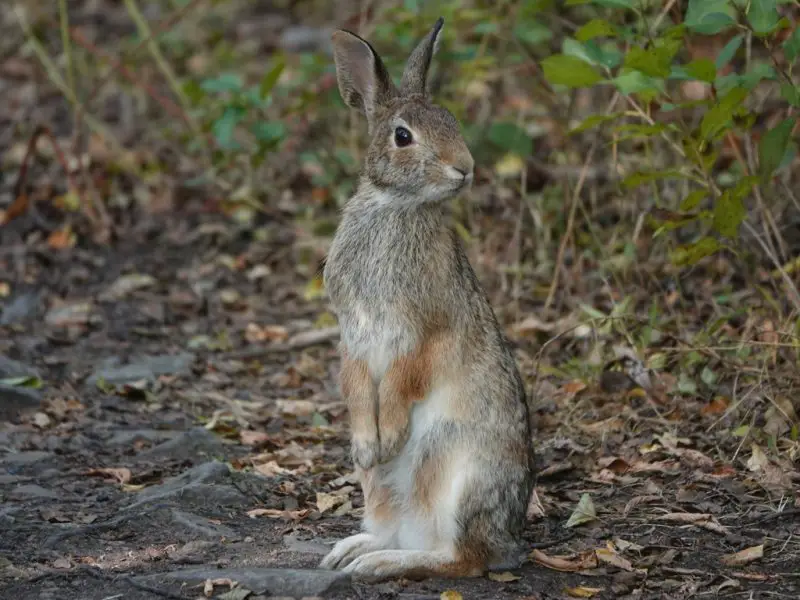
The Eastern Cottontail is the most widespread and commonly seen rabbit in Georgia, easily recognized by its characteristic white, fluffy tail that resembles a cotton ball. Their fur is usually a mix of brown, gray, and reddish tones, which provides excellent camouflage in grassy fields, forest edges, and suburban areas. Adults typically measure between 15 to 18 inches in length and weigh around 2 to 4 pounds, making them relatively small and agile compared to other rabbit species in the state.
Eastern Cottontails are mostly crepuscular, meaning they are most active during dawn and dusk. They rely on their keen senses of sight and hearing to detect predators, often darting into dense vegetation when threatened. These rabbits are highly territorial, with males marking their area using scent glands, and they often create shallow nests or forms lined with grass for resting and hiding.
Their diet in Georgia consists primarily of grasses, clover, and herbaceous plants, but they also consume bark, buds, and twigs during the winter months when fresh vegetation is scarce. They play an important ecological role as prey for foxes, hawks, owls, and snakes, and they help disperse plant seeds through their feeding habits. Despite their abundance, their populations can fluctuate due to predation and habitat loss caused by urbanization.
Eastern Cottontails have a rapid reproductive cycle, often producing three to four litters per year with 3 to 8 kits per litter. Gestation lasts around 28 days, and the young are born blind and helpless, requiring careful maternal care in a well-hidden nest. A fun fact about Eastern Cottontails in Georgia is their ability to perform a zigzag escape maneuver when threatened, making it very difficult for predators to catch them. They are also known for their adaptability to human-altered landscapes, including suburban gardens and parks.
Swamp Rabbit (Sylvilagus aquaticus)
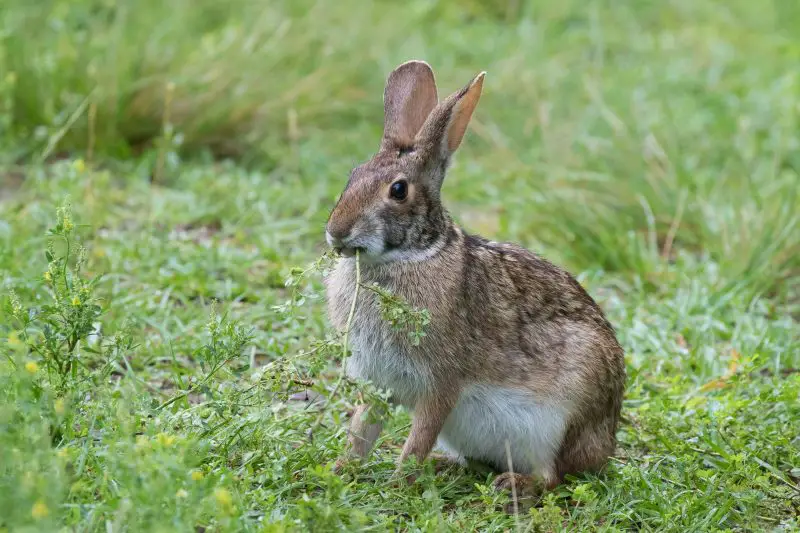
The Swamp Rabbit is a large and distinctive rabbit species inhabiting Georgia, particularly favoring wet bottomlands, swamps, and areas near slow-moving streams. They are significantly larger than Eastern Cottontails, measuring 16 to 22 inches in length and weighing between 3.5 to 7 pounds. Their fur is typically dark brown to blackish on top with lighter underparts, which helps them blend into the shadowy environments of swamps and dense vegetation.
Behaviorally, Swamp Rabbits are strong swimmers and often take to water when threatened, a rare trait among rabbits. They are primarily nocturnal but may also be active during the early morning or late evening. Swamp Rabbits create burrows or use natural shelters in the dense vegetation, where they rest during the day and hide from predators such as bobcats, foxes, and large birds of prey.
Their diet in Georgia includes grasses, aquatic plants, bark, and buds, making them highly dependent on wetland vegetation. During winter, they may also feed on woody plants and twigs. Swamp Rabbits are solitary and maintain territories, often leaving distinctive droppings along pathways to mark their presence. Their reliance on wetlands makes them excellent indicators of ecosystem health, as they require intact marshes and floodplains to thrive.
Reproduction for Swamp Rabbits occurs year-round, with peak breeding in late winter and early spring. Females give birth to 2 to 5 kits per litter after a gestation period of about 35 days. Unlike some rabbits that hide their nests above ground, Swamp Rabbits often utilize dense brush or burrows for protection. A fun fact is that Swamp Rabbits are surprisingly good swimmers and have been observed crossing several meters of open water to reach food or escape predators, a unique adaptation among Georgia’s lagomorphs.
Marsh Rabbit (Sylvilagus palustris)
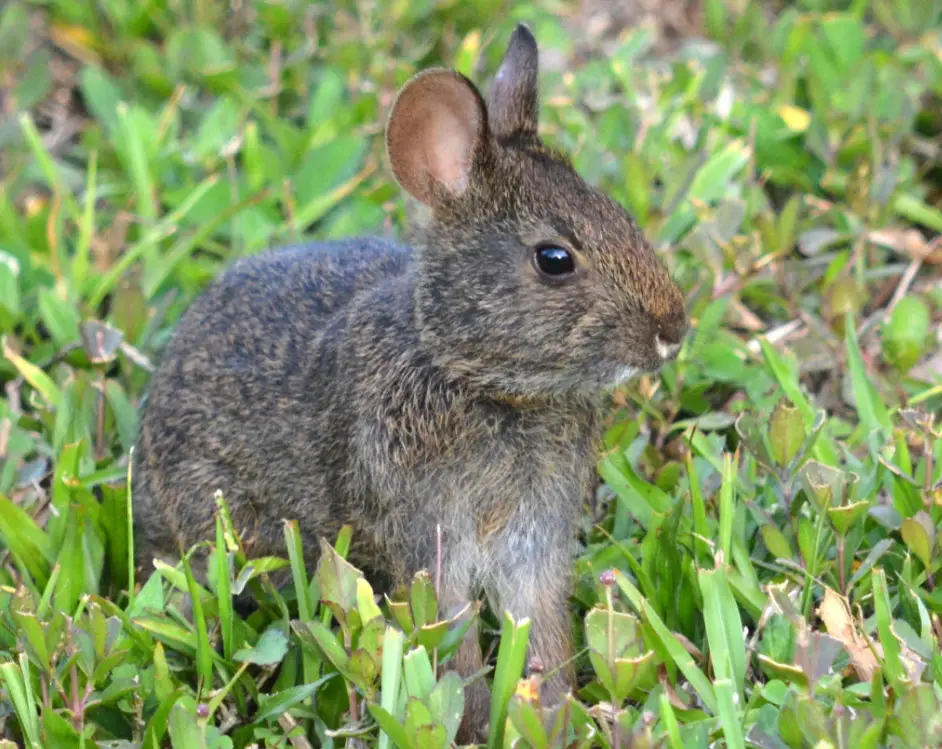
The Marsh Rabbit is a smaller, coastal rabbit species found primarily in Georgia’s tidal marshes, saltwater wetlands, and estuarine environments. They measure around 14 to 17 inches in length and weigh between 2 to 3 pounds, with fur that is dark brown to nearly black, providing excellent camouflage among reeds, grasses, and mudflats. Their tails are shorter than those of Eastern Cottontails, which is an identifying feature when observing them in their wetland habitats.
Marsh Rabbits are mostly nocturnal and extremely secretive, rarely venturing into open areas during the day. They are excellent swimmers and can escape predators by diving into water or moving through dense marsh vegetation. Typical predators include alligators, raccoons, snakes, and various raptors. Marsh Rabbits rely heavily on stealth and concealment, making sightings by humans rare unless at dusk or dawn along quiet marsh edges.
Their diet mainly consists of grasses, sedges, and aquatic vegetation, with occasional consumption of twigs and bark during colder months. Because of their reliance on marsh ecosystems, their populations are closely tied to the health of coastal wetlands. In addition to providing prey for predators, Marsh Rabbits contribute to the dispersal of plant seeds in tidal zones, supporting wetland vegetation growth.
Breeding occurs throughout the year, with multiple litters possible annually. Each litter consists of 2 to 4 kits, which are born fully furred but blind and remain hidden in dense vegetation for several days. A fun fact about Marsh Rabbits in Georgia is their remarkable swimming ability, allowing them to move across water channels between marsh patches with ease, a rare trait among most rabbit species. Their secretive nature and preference for watery habitats make them a fascinating but seldom-seen component of Georgia’s wildlife.
Best Time to Spot Wild Rabbits in Georgia
The optimal time to observe wild rabbits in Georgia is during the early morning hours just after sunrise and the late evening around dusk. These crepuscular periods coincide with their peak activity when they leave their hiding spots to feed and move around. Eastern Cottontails are especially active during these times in open fields, meadows, and forest edges. Swamp Rabbits and Marsh Rabbits, although more nocturnal, can also be observed during low-light hours, particularly near wetlands and marshes.
Seasonally, spring and early summer offer the best opportunities because rabbits are more active during mating and rearing periods. Young kits may emerge from hidden nests, and adult rabbits are busy foraging to sustain their growing families. Autumn can also be good for spotting rabbits as they feed intensively to build fat reserves for winter, though they become more cautious as daylight hours shorten.
Best Places to Spot Wild Rabbits in Georgia
For Eastern Cottontails, open fields, grassy meadows, agricultural lands, and the edges of suburban areas are ideal. State parks like Panola Mountain State Park and Chattahoochee River National Recreation Area offer abundant habitats with both cover and food sources. These rabbits are often seen along trails or near woodland edges, where dense vegetation provides protection while allowing easy access to feeding grounds.
Swamp Rabbits are best observed in wetland areas, bottomland forests, and floodplain habitats. Notable locations include Ocmulgee National Monument and the Okefenokee Swamp, where dense vegetation and water channels offer safe refuge. These rabbits are often found near slow-moving streams or swamp edges and may be spotted swimming or feeding on aquatic vegetation.
Marsh Rabbits are concentrated in coastal salt marshes and tidal wetlands. The Savannah National Wildlife Refuge and the Altamaha River Delta are excellent places to observe them. Look for them along narrow marsh trails or near reed beds during dusk, when they venture out to feed. Their secretive nature means sightings are rare, but patient observers may catch glimpses of them moving through the water or dense marsh grasses.
FAQs About Wild Rabbits in Georgia
What types of wild rabbits are found in Georgia?
Georgia is home to three main species of wild rabbits: the Eastern Cottontail (Sylvilagus floridanus), the Swamp Rabbit (Sylvilagus aquaticus), and the Marsh Rabbit (Sylvilagus palustris). Each species occupies different habitats, from open fields and forests to wetlands and coastal marshes.
How can I identify an Eastern Cottontail?
Eastern Cottontails are small rabbits, 15–18 inches long, with a brownish-gray coat and a distinctive white fluffy tail. They are often seen in grassy meadows, forest edges, and suburban areas. Their ears are relatively short compared to Swamp Rabbits, and they have a fast, zigzagging escape pattern when threatened.
Where are Swamp Rabbits most commonly found in Georgia?
Swamp Rabbits prefer wet bottomlands, swamps, and slow-moving streams. Locations like the Okefenokee Swamp and Ocmulgee National Monument provide ideal habitats. They are excellent swimmers and often escape predators by taking to the water.
What makes Marsh Rabbits unique?
Marsh Rabbits are smaller, dark-colored rabbits that inhabit coastal salt marshes and tidal wetlands. Unlike other rabbits, they are highly secretive, excellent swimmers, and rarely venture into open areas. Their short tails and dark fur help them blend into dense marsh vegetation.
When is the best time to spot wild rabbits in Georgia?
The best time to see wild rabbits is during dawn and dusk, when they are most active. Eastern Cottontails are active in open areas, while Swamp and Marsh Rabbits may be spotted in wetlands and marshes during low-light hours. Spring and early summer are particularly good for observing young kits and adult rabbits.
What do wild rabbits in Georgia eat?
Wild rabbits are herbivores. Eastern Cottontails feed on grasses, clover, and buds. Swamp Rabbits eat grasses, aquatic plants, and twigs, while Marsh Rabbits consume marsh grasses, sedges, and aquatic vegetation. Their diet changes seasonally depending on food availability.
How do wild rabbits reproduce in Georgia?
Rabbits in Georgia reproduce quickly. Eastern Cottontails can have 3–4 litters per year, Swamp Rabbits breed year-round with peak activity in late winter, and Marsh Rabbits may produce multiple litters annually. Kits are born blind and helpless, requiring well-hidden nests for protection.
Are wild rabbits dangerous or a threat to humans?
Wild rabbits are generally not dangerous. They avoid human contact and pose little threat. However, they can carry parasites or diseases like tularemia, so handling them is not recommended. Their presence can sometimes affect gardens or crops, but they are mostly harmless to humans.



